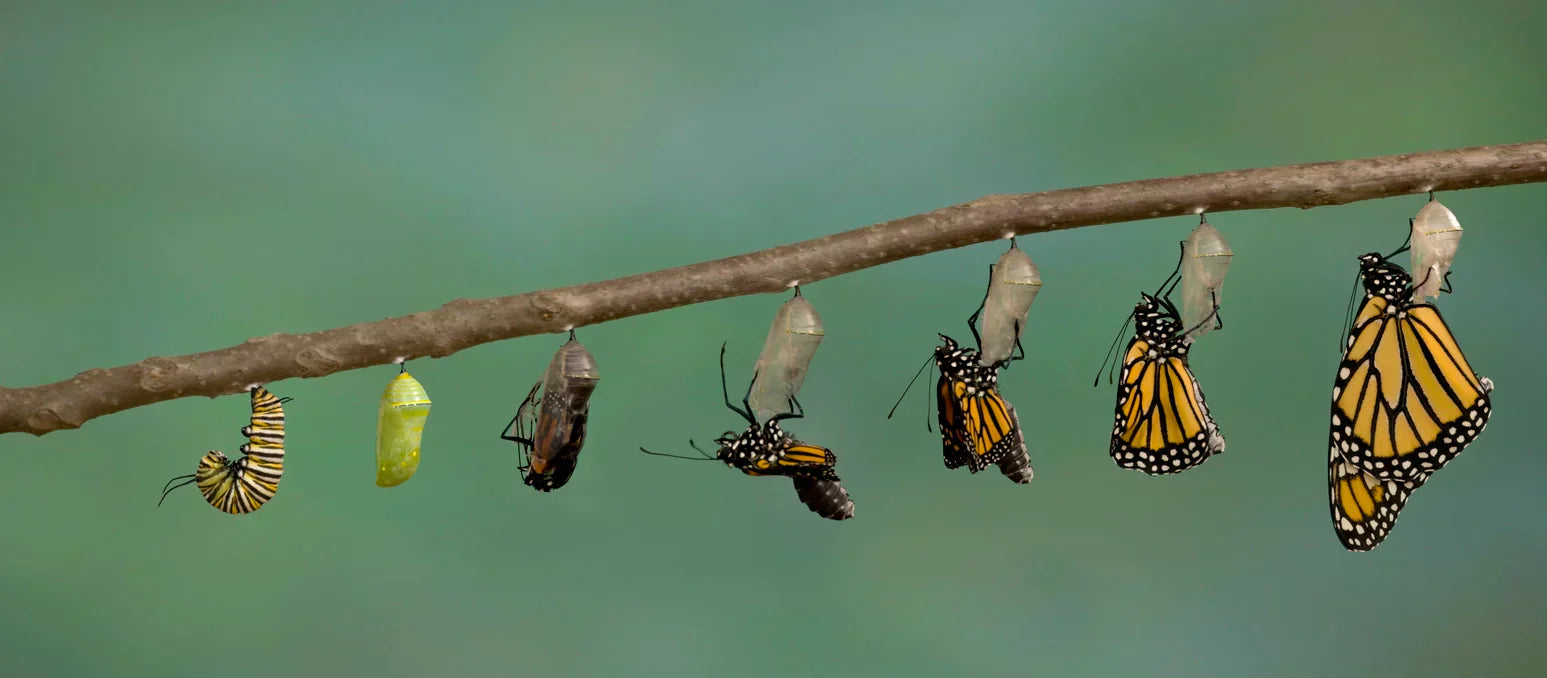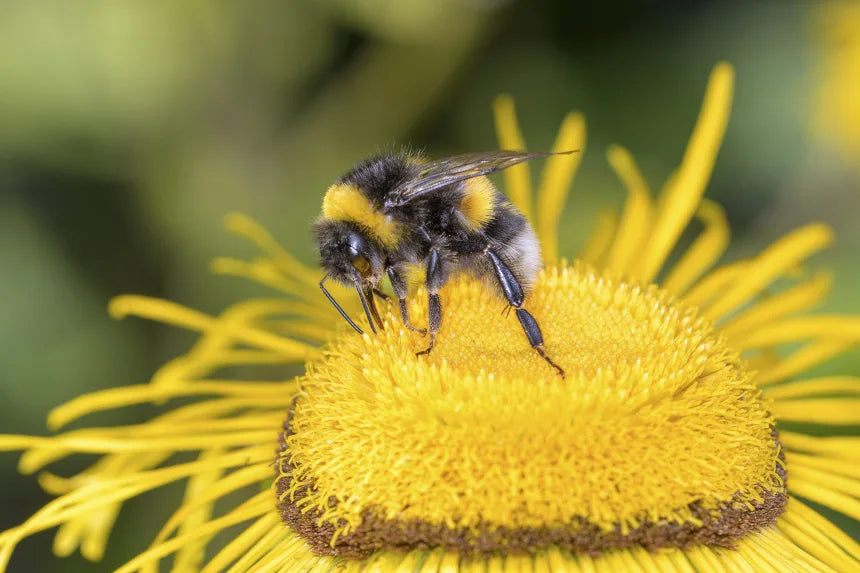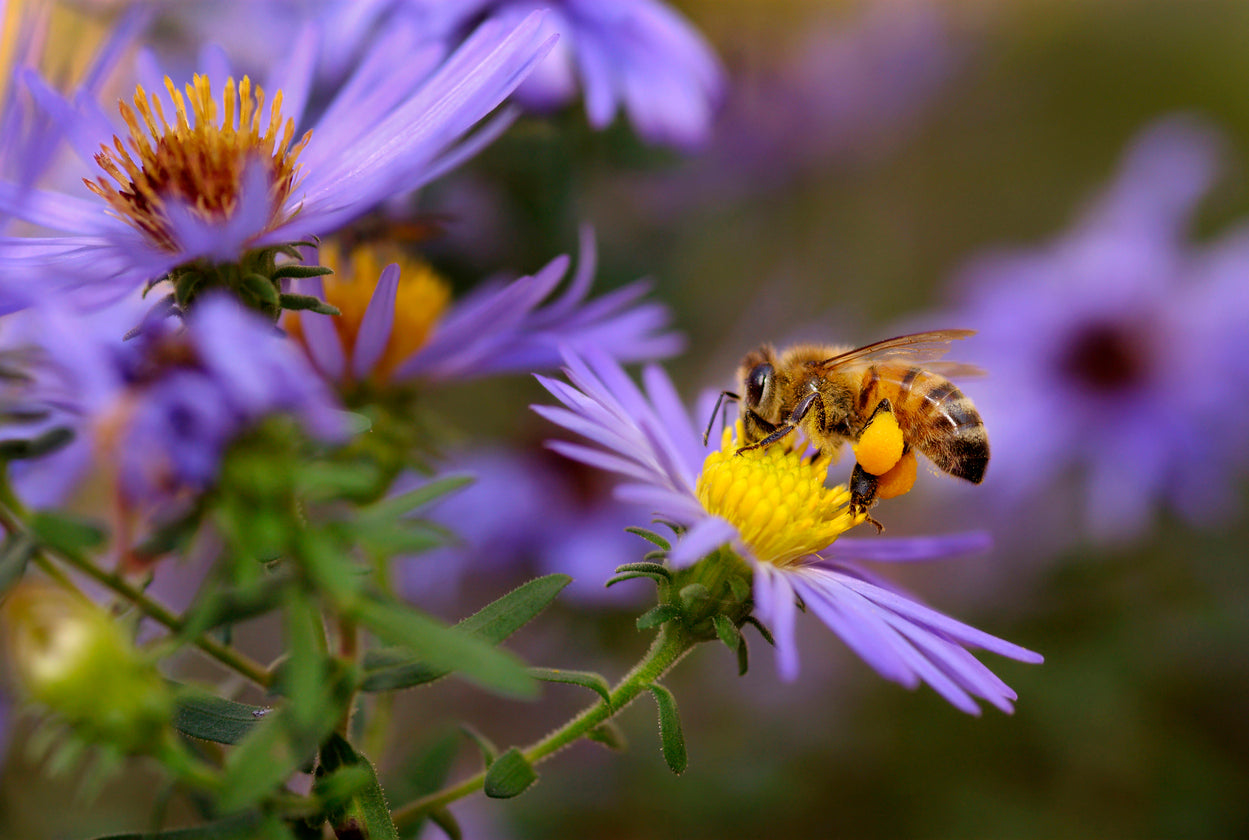Add description, images, menus and links to your mega menu
A column with no settings can be used as a spacer
Link to your collections, sales and even external links
Add up to five columns
Add description, images, menus and links to your mega menu
A column with no settings can be used as a spacer
Link to your collections, sales and even external links
Add up to five columns

The Mysterious World of Insect Metamorphosis
By Spencer McManamna May 17, 2024 4 min read
The Mysterious World of Insect Metamorphosis
In this article, you'll learn all about the many forms of insect metamorphosis! Not all insects experience a similar metamorphosis to our butterflies and ladybugs - in fact, many are quite different! Learn about holometabolism, hemimetabolism and more in this educational article!
What is Insect Metamorphosis?
Metamorphosis is a process of transformation that many insects undergo as they develop from egg to adult. Metamorphosis allows insects to occupy different ecological niches during their life cycles. For instance, larvae might eat leaves underground while adults feed on nectar above, which reduces competition and increases survival odds across generations.
Types of Insect Metamorphosis
Insect metamorphosis encompasses two main types: complete metamorphosis and incomplete metamorphosis.
Complete Metamorphosis (Holometabolism)
Complete metamorphosis, also known as holometabolism, is a developmental process observed in many insects characterized by 4 distinct stages: egg, larva (or caterpillar), pupa, and adult. During complete metamorphosis, the larval stage often has a different body form and lifestyle compared to the adult stage.
Insects that Undergo Complete Metamorphosis
-
Butterflies and moths (Order Lepidoptera)
-
Beetles (Order Coleoptera)
-
Flies (Order Diptera)
-
Ants, bees and wasps (Order Hymenoptera).
4 Stages of Complete Insect Metamorphosis
-
Egg - The process begins with the deposition of eggs by the adult female insect. From these eggs hatch larvae, which often bear little resemblance to the adult form and typically have specialized feeding structures or habits to support rapid growth.
-
Larva - Larvae undergo multiple molts, shedding their exoskeletons as they increase in size. Following the larval stage, insects enter the pupal stage, during which they undergo dramatic internal restructuring and transformation.
-
Pupa - Inside the protective casing of the pupa, or chrysalis in butterflies and moths, the insect's tissues reorganize, and its body takes on the form of the adult. Finally, the adult insect emerges from the pupal case, often with fully developed wings and reproductive organs.
-
Adult - The adult stage is dedicated to reproduction and dispersal, completing the life cycle of the insect.
Incomplete Metamorphosis (Hemimetabolism)
Incomplete metamorphosis, also known as hemimetabolism, is a simpler developmental process observed in certain insect groups where there is no distinct pupal stage. Instead, the immature form, known as a nymph, resembles a miniature version of the adult and undergoes gradual changes until reaching maturity.
Insects that Undergo Incomplete Metamorphosis
-
Grasshoppers and crickets (Order Orthoptera)
-
Praying mantises (Order Mantodea)
-
True bugs (Order Hemiptera)
-
Dragonflies and damselflies (Order Odonata)
-
Cockroaches (Order Blattodea)
3 Stages of Incomplete Insect Metamorphosis
-
Egg - The process begins with the deposition of eggs by the adult female insect, similar to complete metamorphosis. From these eggs hatch nymphs, which resemble miniature versions of the adult but lack fully developed wings and reproductive organs.
-
Nymph - Nymphs undergo a series of molts, shedding their exoskeletons as they grow larger and develop additional body structures. Unlike the pupal stage in complete metamorphosis, there is no distinct pupal stage in incomplete metamorphosis. Instead, nymphs gradually undergo changes in body shape and size until they reach maturity
-
Adult - Once fully developed, the nymph molts for the final time, emerging as a winged adult capable of reproduction.
What is Ametabolism?
Ametabolism, also known as ametaboly, is a relatively rare form of insect development characterized by no metamorphosis, or the absence of distinct developmental stages.
Insects exhibiting ametabolous development hatch from eggs as miniature versions of the adults, undergoing gradual growth and molting until they reach sexual maturity. These insects typically lack significant changes in body form between hatching and adulthood, with juveniles resembling smaller versions of the adults.
Insects that Undergo Ametabolism
-
Silverfish (Order Zygentoma)
-
Springtails (Order Collembola)
-
Bristletails (Order Archaeognatha)
H2: The Evolution of Insect Metamorphosis
Insect metamorphosis is a remarkable evolutionary adaptation that has contributed to the success and diversity of insects over hundreds of millions of years.
The origins of metamorphosis can be traced back to early ancestors of insects, which likely underwent gradual changes in their life cycles driven by environmental pressures and opportunities.
Ametabolous and Hemimetabolous Evolution
Early insects likely exhibited simple forms of development, resembling the ametabolous or hemimetabolous modes seen in some modern insect groups. Over time, evolutionary innovations such as the development of distinct larval and pupal stages facilitated greater ecological diversity and specialization among insect species.
Holometabolous Evolution
The evolution of complete metamorphosis, or holometabolism, represented a significant advancement in insect life cycles. This developmental strategy allowed for the separation of feeding and reproductive stages, reducing competition for resources between immature and adult stages and facilitating exploitation of diverse ecological niches.
The emergence of complete metamorphosis likely provided insects with a competitive advantage, enabling them to colonize new habitats, exploit different food sources, and diversify into myriad forms and lifestyles.
How Long Does Metamorphosis Take?
The duration varies depending on the insect species, type of metamorphosis, temperature, food availability, and environmental conditions.
For example, a housefly goes through complete metamorphosis in anywhere from 7-10 days under optimal conditions, while a monarch butterfly can take around 30 days. A more extreme example are periodical cicadas or certain wood-boring beetles, which can remain in the larval stage for years before pupating.
Insects that go through incomplete metamorphosis, like grasshoppers or dragonflies, develop more gradually, molting several times as nymphs before reaching adulthood. Their development might take weeks or extend over a full season, depending on climate and food supply.
Explore the Incredible World of Insect Metamorphosis with Insect Lore!
Your adventure in the world of metamorphosis is just getting started! Explore our Life Cycle Figurines and witness this incredible transformation with your own eyes with Insect Lore Insect Kits.
Also in Butterflies

Ultimate Guide to Pollinators
December 15, 2025 8 min read
Pollination is the transfer of pollen from an anther of a plant to the stigma of a plant, which makes fertilization and the production of seeds possible. Read on to discover the uniquely incredible world of pollination, which brings so many priceless gifts to our own world.

Tips for Implementing STEM Education in the Elementary Classroom
December 11, 2025 4 min read
In this article, we'll help explain practical strategies for bringing STEM into daily instruction and will explore specific butterfly-metamorphosis activities that enrich your students’ scientific understanding!

History of National Pollinator Month
December 11, 2025 4 min read
National Pollinator Month, observed every June, is dedicated to raising awareness about the essential role pollinators play in sustaining our ecosystems, agriculture, and global food supplies.

Enter Your Voucher Code Below
If you are experiencing difficulty redeeming your voucher on your desktop, please use a mobile device for a better redeeming experience.

We are unable to combine redemption fees. If you are redeeming 1-5 voucher codes, please complete separate purchases through our website for each voucher. If you are redeeming 6+ vouchers, please email us at customerservice@insectlore.com with your voucher codes and shipping address and we'll send you a custom invoice for payment.
Thank you for Redeeming your voucher!
You redeemed a $title

Don't miss this special one Time Offer.
Check the Box to Add this Special Offer to your Cart

Don't miss this special one Time Offer.
Check the Box to Add this Special Offer to your Cart
It looks like you are an Insect Lore UK/EU customer! You are visiting the Insect Lore USA website.
Click Insect Lore UK/EU website to be redirected to insectlore.co.uk.


